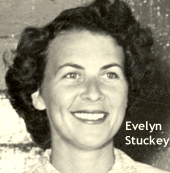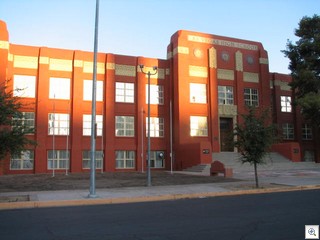Brian Paco Alvarez is the Curator of the Las Vegas News Bureau Archive and an Urban Historian. He is also a native Las Vegan long involved in the cultural arts of our favorite neon city.
He took a few minutes to talk about culture, art and urban history with us:
1) As a native Las Vegan, how has the city changed since you were a kid and what do you think of the changes?
Oh my goodness has Las Vegas changed. It is not the small city that I grew up in but looking at the Strip I am excited to see it finally fill in and have tall structures that are part of any city. As a child I was fortunate to spend several years living in New York and New Jersey with family and I was always fascinated with tall buildings. So when Las Vegas resorts began reaching for the sky it reminded of what New York was like. Of course buildings do not make a city but large concentrations of people do. Unfortunately Las Vegas decided to spread its population out rather than try to encourage the population to live in the core; this has been a trend that was set many years ago.
Las Vegas is definitely a tale of two cities; the greater Las Vegas Metro area and the Strip. For better or for worse the communities out of control growth caused us great headaches over the last 25 years. Our community’s leaders have done a poor job of proper planning and this lack of leadership is self evident by the urban sprawl that has gripped the city in all directions.
The greater Las Vegas metropolitan area definitely did not learn any lessons from Los Angeles and allowed increasing tax revenues to blind them when it came to planning. Luckily with the economic downturn over the last two years the city is learning major lessons in urban planning. Many suburban areas have become ghost towns and people are slowly moving back to the city core where the redevelopment of Downtown will be the economic driving engine of the city for the foreseeable future. We are very fortunate that Mayor Oscar B. Goodman understands the importance of a vibrant city core and his perseverance in the redevelopment of Downtown sets the stage for Las Vegas to develop a new and creative economy outside of the gaming sector. It is a good time to be living in Las Vegas for the renaissance has begun.
2) There is a popular myth that people believe: "There is no culture in Las Vegas", as one of the leading advocates for the Arts in Las Vegas, how do you respond to that myth?
The myth is propagated by the fact that recent transplants always compare Las Vegas to the communities they came from. I am willing to guarantee that most of the people who complain more than likely did not participate in their former community’s cultural assets. It is self evident when I attend the opera, the symphony or most cultural activities by the audiences that attend these events. In many instances I am one of the youngest people in the audience. Usually those who do attend those events are seniors who retired to Las Vegas and immediately enculturated themselves to the culture of their new home. Whereas recent transplants of my age are the ones who always claim there is no culture in Las Vegas yet you rarely see them at the opera.
Yes there is culture the problem is simple, “newbees” are not willing to seek it out nor are they willing to participate in helping further the arts in their new home.
3) What partnerships would you like to see the City of Las Vegas and Clark County pursue regarding arts and culture?
I have always been an advocate of consolidation. It is in my strongest belief that the City of Las Vegas should annex North Las Vegas and the townships of Paradise, Winchester, Sunrise Manor, Spring Valley, Enterprise and Whitney.
With that said Clark County should work closely with the city in the preservation of its historic neighborhoods and in the development of a separate cultural affairs division outside of parks and recreation. Why reinvent the wheel when the City of Las Vegas has the expertise in this area.
A series of special districts should be created around the community that foster redevelopment especially in the area of cultural arts infrastructure. These districts would encourage creative businesses to relocate there and create synergistic centers. These districts could be located around the University, Commercial Center, China Town, around the campus of College of Southern Nevada on West Charleston and Cheyenne. The county has begun this in earnest but more focus needs to be given to it especially in lieu of the current economic realities.
4) Aside from a core group of supporters, Historic Preservation still feels like it is under-rated and under supported not only by the City and the County but by the residents of Las Vegas as well. What suggestions do you have for making historical preservation more important to the local municipalities and the community at large?
The solution is very simple, “education.” The preservation groups must be willing to step forward and work closely with our community leaders to educate them about the treasures in which we as a society have been entrusted to care for. Las Vegas is a new city therefore we must find novel ways of explaining to the public that the buildings that were built 40 and 50 years ago are relevant to history because of the context in which they were built.
This community has a spectacular ephemeral past and we must use those collections whether they are from UNLV Special Collection, the Nevada State Museum or the Las Vegas News Bureau to educate the public about preserving our past. Unfortunately we do not have many large commercial buildings left to preserve but we have thousands of historic homes in dozens of historic neighborhoods that we should be preserved. Demonstrating to the public the importance of preserving these neighborhoods is key, not to mention it helps sustain property values. We must demonstrate to the public the economic value of historic preservation. Economics always resonates with the American public no matter what community you may live in.
5) You are currently the curator of the Las Vegas News Bureau collection but you have also worked at the Liberace Museum and the Neon Museum. What do you think of the Liberace museum's plans to move to the Strip? And what do you think of the Neon Museum's partnerships to restore classic signs and repurpose them?
Well if history has taught us anything museums on the Strip do not work. Let us look at the Guggenheim as a prime example of this. If the leadership of the Liberace Museum feel they have a better formula then I wish them G-dspeed. But in my honest professional opinion a move to the Strip means they cease being a museum and from what I have gathered so far that is their goal. In the end they become another attraction like Titanic: the Exhibition and Bodies.
As far as the Neon Museum; I have had the honor to be their interim Curator and benchmark to my time at the museum I was tasked to write a Curatorial Plan based upon their collections management policies that they had in place when I took over the collection. I believe that the museums rehabilitation and exhibition of their classic signs is a very prudent move.
During my tenure with the museum the board discussed at length this very subject and with the curatorial plan, they have a primer to base their decisions on. So far from what I have observed the plan is working beautifully. The museum is using its collection as a way to educate the public about this important architectural vernacular by exhibiting these artifacts in a public forum yet at the same time maintaining the Boneyard for the public to enjoy.
6) As a key supporter of the Arts District, where do you see it going in the next few years?
The seeds of the arts district were planted many years by a small group of visionaries who saw the areas potential and it is recently that those seeds have begun to blossom.
With the renaming of the neighborhood to 18b, representing the original 18 blocks of the arts district, the recent opening of the Modernist Brett Wesley Gallery and the soon to be completed ACE Rapid Transit System on the Casino Center corridor the stage is set for what will become an interesting set of growth patterns over the next few years. As I mentioned previously the city has made great strides in the redevelopment of Downtown and they have taken a leadership role in encouraging businesses and people to relocate into the city core. Everything that the city has done thus far has been trending positive and we hope that this trend will continue.
7) The new City Center on the Strip, what are your thoughts? Is it the direction the Strip is going to go in when the economy recovers?
Projects like City Center come around once in a generation and it is doubtful that we will see anything of that scale and magnitude built in Las Vegas in the foreseeable future. I do not want to conjecture too much about the project since I am still carefully studying it. City Center deserves a very well thought of and critical approach and one that looks at all facets of its development. Because of its sheer size and scope one must look at it three dimensionally rather than opine as most people do. I would rather study the project as more than just another resort on the Strip; it is far too important socially and economically than looking at it ephemerally. I will say this that City Center is a project that has left me thinking in ways that other Las Vegas projects have not. I love the challenge and I am up for it wholeheartedly.
What we will be seeing on the Strip as the economy recovers is the reinvestment and updating of older properties along the Strip. A prime example of this is the literal re-invention of Caesars Palace over the last fifteen years. Rather than tear down and rebuilt they have very successfully remodeled the older elements of the property and brought them together with new elements into an architecturally consistent project that in many ways resembles the mixture of buildings in ancient Rome. Caesars has and will always be my favorite Las Vegas resort.



